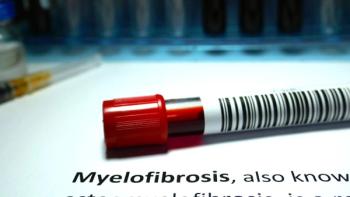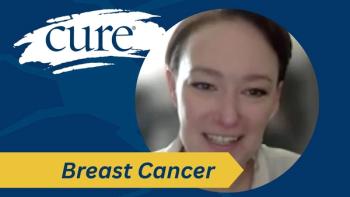
Cancer, Redefined: Survivor
The notion then, that disease outcome (whether you live or die) determines if you are a survivor is therefore erroneous.
sur•vi•vor (sərˈvīvər/) noun : A person who is able to live their life despite experiencing difficulties.
“I can’t wait to get through my cancer treatment so I can go on living my life. I want to be a survivor,” said my patient with a newly diagnosed ovarian cancer.
You are a survivor, my dear. You already are.
Cancer survivorship begins at diagnosis. The commonly accepted definition of “survivor” within the cancer community is simply a person diagnosed with cancer. So once the terrifying sentence, “I’m so sorry, the biopsy shows that you have cancer,” leaves your doctor’s lips and pierces your soul, you begin life anew as a cancer survivor. And although nothing actually changed, everything changes.
The notion then, that disease outcome (whether you live or die) determines if you are a survivor is therefore erroneous. The accepted definition presupposes no end result of the diagnosis. So if you choose treatment for a curable or controllable cancer or reject therapy for any reason, you remain a survivor until separation of body and spirit. Resultantly, survivors experience their journeys uniquely. Folks enduring harsh surgical, chemotherapeutic or radiation therapies for aggressive disease often feel an increased urgency compared to those offered “watchful waiting” for more indolent (non-life threatening) cancers. However, a sense of mortality, or even an existential crisis, commonly hijacks all cancer survivors, regardless of the anticipated outcome of their disease.
Life after diagnosis (AD) feels completely different to that before cancer (BC). Time in survivorship, often viewed through a lens of palpable mortality, assumes new meaning and increased value — a preciousness of days often reserved for the birth of a child, and a sense that each passing minute holds wonder and mystery to be cherished. And with it, a burden to find and capture and distill the value of each moment.
This newly felt sense of urgency can manifest in a couple of different ways. Survivors describe time wasted akin to a mortal sin. My wife, a leukemia survivor, laments waiting in the grocery store checkout while screaming in her head “Here I am, dying of leukemia, and you’re holding up the line looking for exact change? C’mon lady, I got some living to do.”
Alternatively, as a cancer physician and caregiver, I found meaning and beauty where I never had before. One night, after catching a particularly beautiful sunset, bike-riding home from work, I grabbed my daughter from her highchair and took her outside to share it. Holding her closely in my arms I whispered, “ Look, God painted the sky for us.” She looked at me and said, “Dad. It’s really cold. Can we go inside?” I must conclude that urgency and beauty and time are relative experiences where value is perceived differently by all involved. But I am very certain that survivorship intensifies life’s colors.
Survivorship is not static. It is my theory, not yet supported by data, that survivors traverse a predictable pattern of timeline and milestones. The first phase “shock and awe” commences at diagnosis and carries through the first year or two AD. This period is characterized by chaos and turmoil of mind, body and spirit resulting from cancer and its treatment. The next phase, “finding the new normal” in years one to three AD, encompasses healing, recovery and acceptance of those changes brought on by cancer and its treatment. Shortly thereafter, the “advocacy” phase begins, in years three to five AD, as activities of giving back to the cancer community through mentoring, raising awareness and fundraising. Generally, after year five AD, folks “move on” allowing cancer to take a back seat to more traditionally activities of life thus appearing more like the lifestyle in the time BC. This timeline can be disrupted by recurrences and other traumatic cancer-related events including cancer or treatment-related death. It may also accelerate in particularly resilient individuals.
The term “survivor,” accepted by the medical community and most others along the cancer journey, leaves many cold. Some prefer more descriptive and colorful monikers avoiding the bland, vanilla-like nature inherent in the word “survivor.” For instance, some refer to themselves as ”cancer thrivers,” demonstrating that cancer has not limited them in any way. A quick run down of twitter handles such as @WomanofTeal, @BreastAdvocate. @LivingBeyondBC, @AliveandKicknDD, @CancerConnector and @GBM_WARRIOR can give you a sense of some folks’ preferred titles. Although no single word is universally accepted, negative terminology such as “victim” should be avoided.
Presently, over 15 million cancer survivors live in the United States. And due to earlier detection and better treatment, this number is projected, by the American Cancer Society, to grow to 20 million by 2026. That’s a lot of people. A lot of people sharing a similar story of fear, courage and resiliency. A lot of survivors. Survivors who may not all agree on a single name to describe themselves, but share consensus that each precious and vibrant minute of life is to be cherished.
Next in our series “Cancer, Redefined” we will explore the surprisingly often misunderstood word, “cure.”





